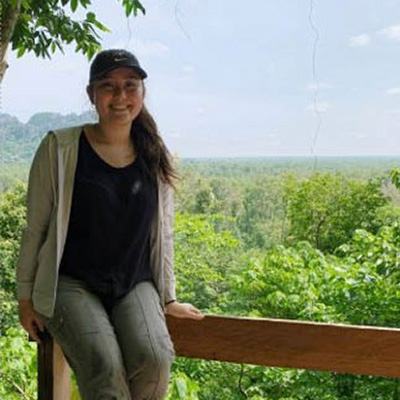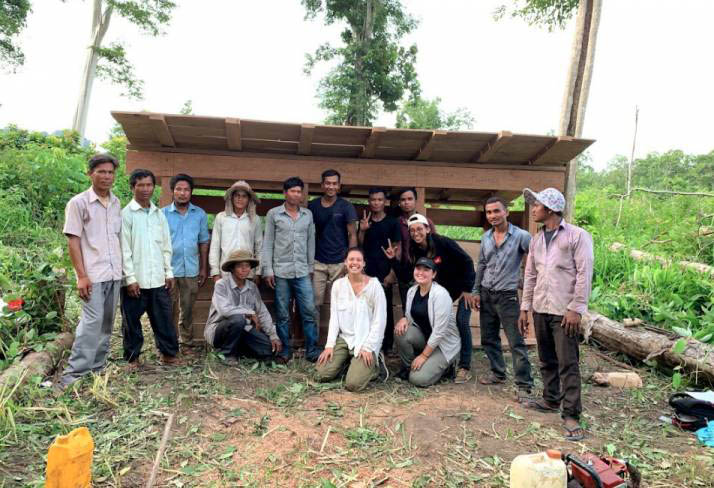Maya Mchale

1. Tell us about your internship abroad this summer and what you worked on!
This summer I interned at the Culture and Environment Preservation Association (CEPA) through the Mundt Peace Fellowship alongside fellow SDSU student McKenna Avery. CEPA develops community forestry, fishery, and ecotourism projects and works to spread awareness of environmental issues throughout Cambodia. We worked on and developed websites for CEPA and one of their ecotourism projects, made recommendations for future ecotourism projects, connected GIS with reforestation projects, built a composting unit planned, and finally summarized our findings and observations in a working paper.
2. How do you compare the environmental challenges of Cambodia to that of America?
The environmental challenges of Cambodia compared to those of America are more caused by corruption, poor management of natural resources, and lack of awareness. As a country, they face a lot of corruption in the government as well as in the military that allows for the illegal logging and trade of valuable timber, making deforestation the most pressing environmental challenge in Cambodia. In the more urban areas, waste and pollution is an issue caused by poor waste management and lack of awareness. Single use plastic is widely used and not properly disposed of due to a lack of awareness. Whereas in America there are more people who are aware of issues like these but choose not to care.
3. What was most shocking to you when you arrived?
The most shocking thing to me when I arrived was just how much Chinese influence there was in the country. Almost all of the buildings that were being developed were by Chinese developers, and some areas in the country are entirely overrun by Chinese businesses that you don’t even feel like you’re in Cambodia anymore.
4. Best memory from your trip?
The best memory from my trip was definitely going on the field visits to Stung Treng province in northern Cambodia. There we were able to see and experience an ecotourism project as it was being developed. Seeing just how hard CEPA and the locals were working to protect their home was truly inspiring.
5. How do you see this experience affecting your academic life at SDSU?
I think this experience will make me think more glocally than before with whatever I am studying.
6. Takeaways from the experience?
In the past when I thought of the NGOs that were working to protect the environment I would only think about the big flashy ones that everyone knows of. But after seeing all of the work that CEPA and similar NGOs in Cambodia and SE Asia do, I’ve been able to fully appreciate just how crucial the smaller NGOs are to saving the environment.

There is still plenty of sustainability work to be done in Cambodia. If you want to have an opportunity like Maya, join the inquiry list for the Mundt Peace Fellowship on Aztecs Abroad to stay in the loop with the application process.
